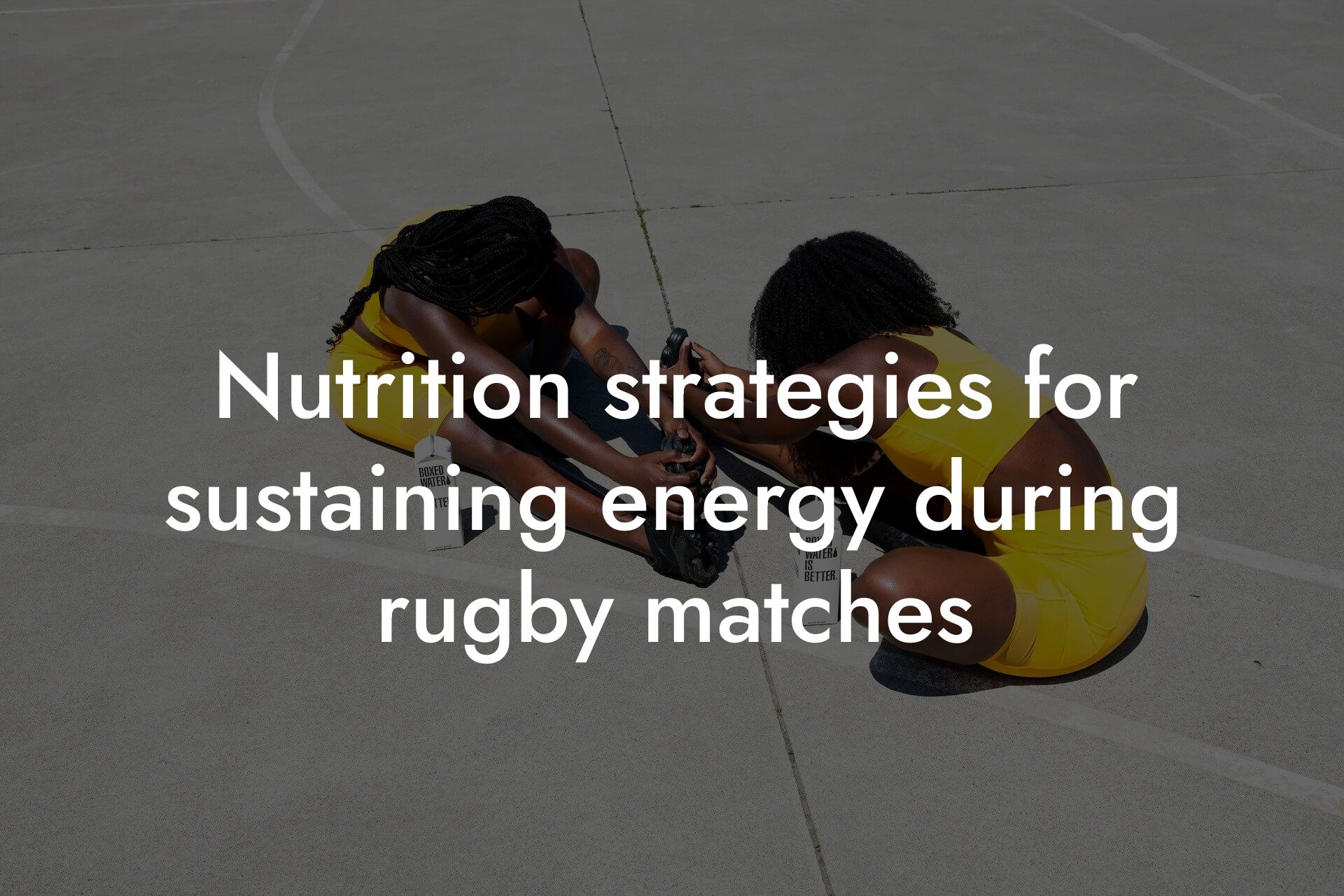As a high-earning professional, you understand the importance of optimizing your physical performance to stay ahead in your career. Rugby, in particular, is a physically demanding sport that requires a combination of strength, speed, agility, and endurance. To take your rugby training to the next level, it's essential to have a deep understanding of your body composition, bone density, and overall physiology. This is where DEXA (Dual-Energy X-ray Absorptiometry) scans come into play.
Table of Contents
What is a DEXA Scan?
A DEXA scan is a non-invasive, low-radiation medical imaging test that measures bone density, body composition, and fat distribution. It's commonly used to diagnose osteoporosis, but its applications extend far beyond bone health. In the context of rugby training, DEXA scans provide valuable insights into an athlete's body composition, allowing for tailored training programs and nutrition plans.
How DEXA Scans Benefit Rugby Players
DEXA scans offer several benefits to rugby players, including:
• Accurate body composition analysis: DEXA scans provide a precise breakdown of lean mass, fat mass, and bone density, helping athletes identify areas for improvement.
• Customized training programs: By understanding their body composition, athletes can develop targeted training programs to enhance their performance.
• Injury prevention: DEXA scans can identify potential injury risks, such as low bone density, allowing athletes to take proactive measures to prevent injuries.
• Optimized nutrition plans: With a detailed understanding of their body composition, athletes can develop personalized nutrition plans to support their training goals.
The Science Behind DEXA Scans
DEXA scans work by emitting two low-energy X-ray beams, which are absorbed differently by various tissues in the body. The scan measures the absorption rates, providing a detailed picture of bone density, lean mass, and fat mass. This information is then used to calculate various metrics, including:
• Bone density (g/cm²): A measure of bone mineral density, which is essential for evaluating osteoporosis risk.
• Body fat percentage (%): A measure of the percentage of body fat, which is critical for optimizing athletic performance.
• Lean mass (kg): A measure of muscle mass, which is essential for generating power and speed.
How to Prepare for a DEXA Scan
To ensure accurate results, it's essential to prepare properly for a DEXA scan. Here are some tips:
• Avoid heavy exercise: Refrain from intense exercise for at least 24 hours before the scan to minimize muscle inflammation.
• Hydrate adequately: Drink plenty of water to ensure proper hydration, which can affect body composition measurements.
• Wear comfortable clothing: Wear loose, comfortable clothing without metal fasteners or accessories.
• Avoid metal objects: Remove any metal objects, such as jewelry or glasses, that may interfere with the scan.
Interpreting DEXA Scan Results
Once you've received your DEXA scan results, it's essential to understand what they mean. Here are some key metrics to focus on:
• Bone density T-score: A measure of bone density compared to a healthy adult of the same gender. A T-score of -1 to -2.5 indicates osteopenia, while a T-score below -2.5 indicates osteoporosis.
• Body fat percentage: Aim for a body fat percentage between 6-13% for optimal athletic performance.
• Lean mass index (LMI): A measure of muscle mass relative to height. Aim for an LMI of 18-20 kg/m² for optimal athletic performance.
Integrating DEXA Scans into Rugby Training
To get the most out of DEXA scans, it's essential to integrate them into your rugby training program. Here are some tips:
• Regular scanning: Schedule regular DEXA scans (every 3-6 months) to track progress and adjust training programs accordingly.
• Training program adjustments: Use DEXA scan results to adjust training programs, focusing on areas that require improvement.
• Nutrition planning: Develop personalized nutrition plans based on DEXA scan results to support training goals.
• Injury prevention: Use DEXA scan results to identify potential injury risks and take proactive measures to prevent them.
In conclusion, DEXA scans are a powerful tool for optimizing rugby training. By providing accurate insights into body composition, bone density, and overall physiology, DEXA scans enable athletes to develop targeted training programs, prevent injuries, and optimize their nutrition plans. At Tano Performance Group, we're committed to helping high-earning professionals like you unlock their full potential. Contact us today to learn more about our DEXA scan services and take your rugby training to the next level.
Frequently Asked Questions
What is a DEXA scan and how does it work?
A DEXA (Dual-Energy X-ray Absorptiometry) scan is a non-invasive medical test that measures bone density and body composition. It uses low-level X-rays to produce images of the inside of the body, which are then analyzed to provide detailed information about bone density, lean mass, and fat mass.
Why is bone density important for rugby players?
Bone density is crucial for rugby players as it directly affects their risk of injury. Low bone density can increase the likelihood of fractures and osteoporosis, which can be devastating for athletes. By monitoring bone density, rugby players can take proactive steps to improve their bone health and reduce their risk of injury.
How does a DEXA scan help with rugby training?
A DEXA scan provides valuable insights into a rugby player's body composition, which can be used to optimize their training program. By identifying areas of improvement, such as low bone density or high body fat percentage, coaches and trainers can create personalized training plans that address these weaknesses and enhance overall performance.
What are the benefits of using DEXA scans in rugby training?
The benefits of using DEXA scans in rugby training are numerous. They include improved injury prevention, enhanced performance, and personalized training programs. Additionally, DEXA scans can help identify potential health risks, such as osteoporosis, and provide early detection and treatment.
How often should rugby players get a DEXA scan?
The frequency of DEXA scans depends on individual circumstances. For rugby players, it's recommended to get a scan at the beginning of the season, mid-season, and at the end of the season. This allows for monitoring of progress, identification of areas for improvement, and adjustments to training programs.
What do the results of a DEXA scan mean?
The results of a DEXA scan provide detailed information about bone density, lean mass, and fat mass. The results are typically presented in a report that includes metrics such as T-scores, Z-scores, and body fat percentage. These metrics can be used to identify areas of improvement and track progress over time.
What is a T-score and what does it mean?
A T-score is a metric used to measure bone density. It compares the individual's bone density to that of a healthy young adult of the same gender. A T-score of -1 to -2.5 indicates low bone density, while a score below -2.5 indicates osteoporosis.
What is a Z-score and what does it mean?
A Z-score is a metric used to measure bone density in relation to individuals of the same age, gender, and ethnicity. A Z-score of 0 indicates average bone density, while a score above or below 0 indicates above-average or below-average bone density, respectively.
How does body fat percentage affect rugby performance?
Body fat percentage has a significant impact on rugby performance. Excess body fat can decrease speed, agility, and endurance, while also increasing the risk of injury. Maintaining a healthy body fat percentage is essential for optimal performance on the pitch.
What is the ideal body fat percentage for rugby players?
The ideal body fat percentage for rugby players varies depending on position and individual goals. Generally, a body fat percentage between 10-15% is considered optimal for most rugby players.
How can DEXA scans help with weight management?
DEXA scans provide detailed information about body composition, which can be used to develop effective weight management strategies. By identifying areas of excess fat and lean mass, individuals can create personalized diet and exercise plans that target specific areas for improvement.
Can DEXA scans be used for other sports and activities?
Yes, DEXA scans can be used for other sports and activities. The technology is not limited to rugby and can be applied to any sport or activity where body composition and bone density are important factors.
Are DEXA scans safe?
Yes, DEXA scans are safe and non-invasive. They use low-level X-rays, which are significantly lower than those used in traditional X-rays. The scan itself is quick, taking only a few minutes, and does not require any special preparation.
How long does a DEXA scan take?
A DEXA scan typically takes around 10-15 minutes, depending on the type of scan and the individual's body composition.
What is the cost of a DEXA scan?
The cost of a DEXA scan varies depending on the location, type of scan, and provider. On average, a DEXA scan can cost anywhere from $100 to $500.
Is a DEXA scan covered by insurance?
Insurance coverage for DEXA scans varies depending on the provider and individual circumstances. Some insurance plans may cover DEXA scans for specific medical conditions, while others may not. It's essential to check with your insurance provider to determine coverage.
How do I prepare for a DEXA scan?
Preparation for a DEXA scan is minimal. Individuals should avoid wearing clothing with metal fasteners, such as zippers or buckles, and remove any jewelry that may interfere with the scan.
What happens during a DEXA scan?
During a DEXA scan, the individual lies on a table, and the scanner passes over their body, taking images of the bones and soft tissue. The process is quick, painless, and non-invasive.
Can DEXA scans be used for children and adolescents?
Yes, DEXA scans can be used for children and adolescents. They are particularly useful for monitoring bone growth and development in young athletes.
How do DEXA scans compare to other body composition measurement tools?
DEXA scans are considered the gold standard for body composition measurement due to their high accuracy and precision. They provide detailed information about bone density, lean mass, and fat mass, making them more comprehensive than other measurement tools, such as skinfold calipers or bioelectrical impedance analysis (BIA).
Can DEXA scans be used for individuals with metal implants or pacemakers?
In general, DEXA scans are not recommended for individuals with metal implants or pacemakers, as the metal can interfere with the scan results. However, some modern DEXA scanners may be able to accommodate individuals with certain types of metal implants. It's essential to consult with a healthcare professional or the scan provider to determine if a DEXA scan is suitable.
How can I find a qualified provider for a DEXA scan?
To find a qualified provider for a DEXA scan, individuals can ask their healthcare professional for a referral or search online for providers in their area. It's essential to ensure that the provider has experience with DEXA scans and is certified by a reputable organization, such as the International Society for Clinical Densitometry (ISCD).
What is the role of a healthcare professional in interpreting DEXA scan results?
A healthcare professional plays a crucial role in interpreting DEXA scan results. They can help individuals understand the results, identify areas for improvement, and develop personalized plans to address any health concerns or optimize performance.
Here are some related articles you might love...
- Strength training programs for amateur rugby players
- Maintaining muscle mass for optimal rugby performance
- Nutrition strategies for sustaining energy during rugby matches
- How to optimize endurance and power in rugby
- The role of body composition in rugby performance
- Recovery strategies for rugby athletes after matches
- Reducing body fat for better agility and power in rugby
- Off-season conditioning for amateur rugby players
- Bone density and injury prevention in rugby
Zak Faulkner
Zak Faulkner is a leading authority in the realm of physical health and body composition analysis, with over 15 years of experience helping professionals optimise their fitness and well-being. As one the experts behind Tano Performance Group, Zak has dedicated his career to providing in-depth, science-backed insights that empower clients to elevate their physical performance and overall health.
With extensive knowledge of DEXA technology, Zak specializes in delivering comprehensive body assessments that offer precise data on body fat, muscle mass, bone density, and overall physique. His expertise enables individuals to make informed decisions and achieve their fitness goals with accuracy and confidence. Zak’s approach is rooted in a deep understanding of human physiology, combined with a passion for helping clients unlock their full potential through personalised strategies.
Over the years, Zak has earned a reputation for his commitment to excellence, precision, and client-focused service. His guidance is trusted by top professionals who demand the best when it comes to their health. Whether advising on fitness programs, nutritional strategies, or long-term wellness plans, Zak Faulkner’s insights are a valuable resource for anyone serious about taking their health and fitness to the next level.
At Tano Performance Group, Zak continues to lead our Content Team revolutionising how professionals approach their physical health, offering unparalleled expertise that drives real results.




